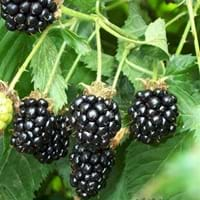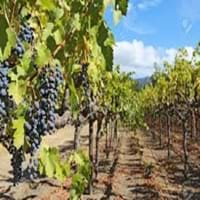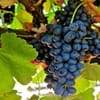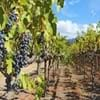Life Span
Biennial and Perennial
Annual and Perennial
Origin
Hybrid origin
Hybrid origin
Types
Not available
Red Grape, Catawba grape
Habitat
Temperate Regions
Terrestrial
USDA Hardiness Zone
6-9
5-8
Sunset Zone
Not Available
5, 6, 7, 8, 9, 10, 11, 12, 13, 14, 15, 16, 17, 18, 19, 20, 21, 22
Habit
Prostrate/Trailing
Vining/Climbing
Minimum Height
Not Available
Minimum Width
Not Available
Flower Color Modifier
Bicolor
Bicolor
Fruit Color
Black
Purple, Black
Leaf Color in Spring
Green
Light Green, Gray Green
Leaf Color in Summer
Green
Gray Green, Dark Green
Leaf Color in Fall
Green
Red, Gold, Bronze, Orange Red
Leaf Color in Winter
Light Green
Light Green
Leaf Shape
Alternate
Irregular
Plant Season
Spring
Summer, Fall
Sunlight
Full Sun
Full Sun, Partial Sun
Type of Soil
Loam
Loam, Sand
The pH of Soil
Acidic, Neutral
Acidic, Neutral, Alkaline
Soil Drainage
Well drained
Well drained
Bloom Time
Early Spring, Late Winter
Late Spring, Early Summer
Tolerances
Drought
Drought
Where to Plant?
Ground
Ground
How to Plant?
Vegetative Reproduction
Seedlings, Transplanting
Plant Maintenance
Medium
Medium
Watering Requirements
Keep the Soil well drained, Requires regular watering
Requires regular watering
In Summer
Lots of watering
Lots of watering
In Spring
Moderate
Moderate
In Winter
Average Water
Average Water
Soil pH
Acidic, Neutral
Acidic, Neutral, Alkaline
Soil Type
Loam
Loam, Sand
Soil Drainage Capacity
Well drained
Well drained
Sun Exposure
Full Sun
Full Sun, Partial Sun
Pruning
Prune prior to new growth
Remove damaged leaves, Remove dead branches, Remove dead leaves
Fertilizers
All-Purpose Liquid Fertilizer
All-Purpose Liquid Fertilizer
Pests and Diseases
Anthracnose, Crown rot, Japanese Beetles, Powdery mildew, Rust
Red blotch
Plant Tolerance
Drought
Drought
Flowers
Insignificant
Insignificant
Flower Petal Number
Single
Not Available
Foliage Texture
Medium
Coarse
Foliage Sheen
Matte
Matte
Attracts
Bumblebees, Butterflies, Caterpillar, Flying insects
Birds
Allergy
Not Available
Not Available
Aesthetic Uses
Not Available
Not Used For Aesthetic Purpose
Beauty Benefits
Not Available
Good for skin and hair, Not Available, Speed hair growth, Stops hair loss
Environmental Uses
Air purification
Air purification, Food for birds
Medicinal Uses
Antioxidants, Digestion problems, Iron, Phosphorus
Aging, Alzheimer’s Disease, Antibacterial, Asthma, cholesterol-lowering, constipation, Digestion problems, Kidney problems, Migraines
Part of Plant Used
Flowers, Leaves, Root, Stem
Fruits
Other Uses
Animal Feed, Beneficial species for attracting pollinators, Can be boiled and seasoned, pickled, Jam, Jelly, Tea-like beverage can be brewed, Used as Ornamental plant, Used for its medicinal properties
Used As Food, Used for its medicinal properties
Used As Indoor Plant
No
No
Used As Outdoor Plant
Yes
Yes
Garden Design
Edible, Fruit / Fruit Tree, Groundcover
Edible, Fruit / Fruit Tree, Vine
Botanical Name
Rubus canadensis
VITIS 'Campbell Early'
Common Name
Thornless Blackberry
Purple Grape
In Hindi
Thornless blackberry
बैंगनी अंगूर के पौधे
In German
Rubus canadensis
Lila Traubenpflanze
In French
Rubus canadensis
usine de raisin pourpre
In Spanish
Rubus canadensis
plantas de uva morada
In Greek
Rubus canadensis
Μωβ εργοστάσιο σταφυλιών
In Portuguese
Rubus canadensis
planta uva roxa
In Polish
Bezkolcowej Blackberry
Purpurowy roślin winogron
In Latin
Thornless Rubus
Uva herba
Phylum
Magnoliophyta
Magnoliophyta
Class
Magnoliopsida
Magnoliopsida
Clade
Angiosperms, Eudicots, Rosids
Angiosperms, Eudicots, Rosids
Tribe
Not Available
Not Available
Subfamily
Not Available
Not Available
Number of Species
Not Available
Not Available
Importance of Thornless Blackberry and Purple Grape
Want to have the most appropriate plant for your garden? You might want to know the importance of Thornless Blackberry and Purple Grape. Basically, these two plants vary in many aspects. Compare Thornless Blackberry and Purple Grape as they differ in many characteristics such as their life, care, benefits, facts, etc. Every gardener must at least have the slightest clue about the plants he wants to plant in his garden. Compare their benefits, which differ in many ways like facts and uses. The medicinal use of Thornless Blackberry is Antioxidants, Digestion problems, Iron and Phosphorus whereas of Purple Grape is Aging, Alzheimer’s Disease, Antibacterial, Asthma, cholesterol-lowering, constipation, Digestion problems, Kidney problems and Migraines. Thornless Blackberry has beauty benefits as follows: Not Available while Purple Grape has beauty benefits as follows: Not Available.
Compare Facts of Thornless Blackberry vs Purple Grape
How to choose the best garden plant for your garden depending upon its facts? Here garden plant comparison will help you to solve this query. Compare the facts of Thornless Blackberry vs Purple Grape and know which one to choose. As garden plants have benefits and other uses, allergy is also a major drawback of plants for some people. Allergic reactions of Thornless Blackberry are Not Available whereas of Purple Grape have Not Available respectively. Having a fruit bearing plant in your garden can be a plus point of your garden. Thornless Blackberry has showy fruits and Purple Grape has showy fruits. Also Thornless Blackberry is not flowering and Purple Grape is not flowering . You can compare Thornless Blackberry and Purple Grape facts and facts of other plants too.





